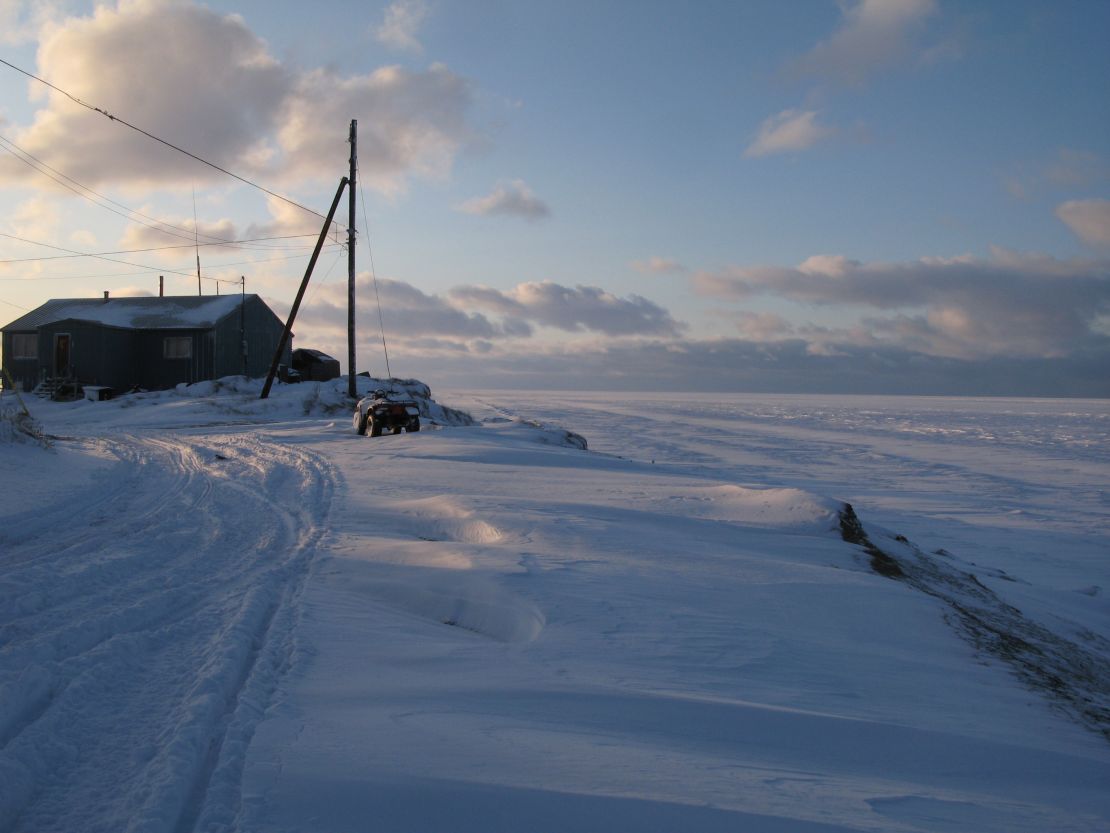Editor’s Note: CNN columnist John D. Sutter is reporting on a tiny number – 2 degrees – that may have a huge effect on the future. He’d like your help. Subscribe to the “2 degrees” newsletter or follow him on Facebook, Twitter and Instagram. He’s jdsutter on Snapchat.
Story highlights
President Obama visits Alaska to highlight climate change
John Sutter: The trip is somewhat ironic given new Arctic drilling
Obama’s on a climate tour of Alaska this week.
The Last Frontier state is arguably the best place in the United States to see the now-now-yes-really-now effects of climate change. On the U.S. President’s itinerary: melting glaciers, struggling fishermen and the cultural dislocation of Alaska Native villages.
The Arctic is warming at about twice the rate of the rest of the globe, meaning it’s an obvious front line in the war on global warming. That Obama is highlighting the clear and present dangers of climate change is vitally important. It may help wake up the American people to a topic they’ve been slow to embrace. And it may help bolster Obama’s credibility as he heads into global negotiations this December in Paris, where world leaders will try to limit warming to 2 degrees Celsius, which is regarded as the threshold for dangerous and potentially unmanageable climate change.
That number – 2 degrees Celsius – is also the reason, however, I find Obama’s trip to the Arctic to be rather ironic. Scientists have argued that the world will not to be able to meet its target of limiting warming to 2 degrees Celsius, measured as a change in temperature since the industrial revolution, if we tap oil reserves in the Arctic. Yet, that’s exactly what the administration is allowing to happen.
“Our results suggest that, globally, a third of oil reserves, half of gas reserves and over 80% of current coal reserves should remain unused from 2010 to 2050 in order to meet the target of 2 degrees Celsius,” Christophe McGlade and Paul Ekins wrote in the journal Nature earlier this year. “We show that development of resources in the Arctic and any increase in unconventional oil production are incommensurate with efforts to limit average global warming to 2 degrees Celsius.”
This is all a numbers game, as McGlade and Ekins show. To meet international climate targets, the world only can burn about 1,000 gigatons of carbon. We’ve already burned through more than half of that carbon budget, and could finish it off in 30 years if things don’t change fast.
Given that context, the Obama Administration’s decision to allow Shell to start drilling for oil off the coast of Alaska makes us look like junkies on the search for the next hit.
That’s clearly not smart climate policy.
And it doesn’t position the United States well for the Paris climate talks.
President Obama is trying to cement a legacy as the U.S. president who finally – finally – did something to fight climate change. He is earning that reputation in many ways. His Clean Power Plan aims to lessen pollution from coal power plants. He’s pushed for more-efficient cars and reductions in methane pollution. His trip to Alaska this week could add to that legacy – helping people around the world see the very real dangers of climate change.
Alaska already has warmed 1.7 degrees Celsius in the last 60 years, according to the U.S. National Climate Assessment. Wildfires have burned 5 million acres acres this year alone, leading the nonprofit Climate Central to declare Alaska has entered a “new era for wildfires.” Summer sea ice could disappear completely by 2050, according to federal scientists, which is part of what makes it easier for energy companies to search for oil and gas there. And, as Obama is expected to highlight, Alaska Native cultures are at risk.
In 2009, as world leaders prepared to meet in Copenhagen to talk about a climate treaty that essentially flopped, I went to Shishmaref, Alaska, a tiny village on a barrier island. There, I met Shelton Kokeok, now 70, who lives with his wife, Clara, in a blue house at the very edge of the land. Other homes in the village already had toppled into the sea as warming temperatures helped accelerate permafrost melt and coastal erosion. The Kokeok family lives in fear their house could be next.

I called Shelton Kokeok on Sunday night. He still lives in the same blue house – and hopes he will be able to live out the rest of his days there.
“Everything’s still the same up here,” he said. “Pretty much the same.”
Same fears. Same hopes. Same limbo.
“I hope somebody could do something about it,” he said, referring both to climate change and the erosion he sees along the coast of the Chukchi Sea.
It will take many “somethings” to save Shismaref, and to prevent disastrous warming. One of those somethings may be Obama’s visit to the Alaskan Arctic, the first by a sitting U.S. president.
Another would be preventing Shell from drilling in this delicate environment.
This potentially is a life and death matter. When I visited in 2009, Shelton Kokeok told me his son, Norman, had fallen through the ice and died a couple years earlier. The ice was thinner than normal when his son went duck hunting on a snowmobile, he told me, because of warmer temperatures.
It’s impossible, of course, to attribute that death, or others, to climate change definitively.
But Shelton Kokeok sees it that way, and I don’t blame him.
We owe it to the Kokeok family – and to ourselves, since the effects of climate change are not limited to Alaska – to shake our addiction to fossil fuels.
Allowing Shell to drill in the Arctic only will accelerate warming.














